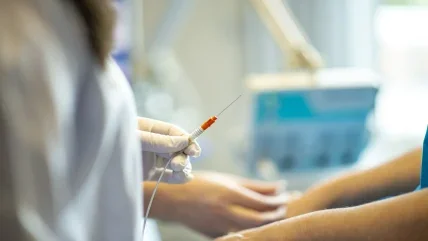
Drawing from the Covid 19 experience, how can the In vitro diagnostics testing model be enhanced in the EU?
Molbio Diagnostics: Covid 19 caused severe healthcare turbulence for the global community. While it displayed the immense value that IVDs bring, it revealed drawbacks especially with regard to infectious diseases. Here are some ways in which the EU could serve the community better:
- Collaboration across verticals, organisations and governments: Given the rapidness with which an infection spreads, action at the ground level needs to be prompt and directed. This is possible only when clear channels of communication exist between the authorities, healthcare providers, manufacturers and patients
- Incentivise manufacturers to scaleup at short notice: Increasing manufacturing capability needs heavy capital expenditure. Companies may be reluctant to do so, given that these facilities may lie idle once the pandemic passes. In such cases, the state should reward manufacturers with monetary incentives that allow for the setting up of adaptable production facilities. The EU can collaborate with LMICs for manufacturing. There were several examples of state-of-the-art plants for diagnostics being setup at short notice during Covid 19 in countries such as India
- The EU should partner with LMICs for technology development. Technology should cut across geographic and climatic constraints. Only then can an IVD be truly global in its nature of application
- Invest in point-of-care (POC) testing: POC technologies eliminate the need for patients to travel large distances and crowd hospitals and health centres. A much quicker turnaround time for the result than lab/hospital-based devices also means that patients infect fewer people around them
- Fast-tracked yet thorough regulatory process: A multi-stakeholder committee could come together to set up a protocol for exceptional cases. The regulatory procedure would still be as exacting as earlier. The difference would be that the regulatory organisations would take up relevant IVDs as high priority and ensure that the regulatory teams work in parallel to evaluate them.
As per the WHO Global TB Report 2023, the European region missed reaching out to 1 in every 4 TB cases. How can we reach such people with TB in Europe with early and accurate diagnosis?
The rapid spread of Covid 19 across countries via air travel showed how international movement of people has exponentially grown in a globalised world. Health security is important in all countries across the world. The following approaches could help address this:
- Increased awareness: There is sometimes a perception that TB is a disease limited to the Global South. This misconception can be changed with information dissemination
- Adoption of point-of-care (POC) technologies: Since the missed cases are scattered across the region and not concentrated only in a few urban centres, test kits and devices will be needed across multiple areas. Thus, the heavier diagnostic devices can serve as the hub while the POC devices act as the spokes
- Incentivise purchase of affordable yet accurate diagnostics: As the EU region has a high burden of NCDs such as CVDs and other lifestyle diseases, typically the state focuses spending on these areas. So, affordable devices would allow the exchequer to spend on infectious disease prevention without compromising on its other target areas.
Latest ECDC reports an increase in reported cases of STIs across 27 (EU/EEA) countries. What are the recommendations for enhanced case finding among vulnerable groups?
- It is of primary importance to get a quick diagnosis. Treatments exist for most STIs and identifying them early on not only protects the patient but also controls spread of the disease
- Diagnosis and treatment come into the picture only once awareness exists. This can happen via structured information dissemination as well as informal bidirectional conversations in society. This will also enable people to shed any stigma that they may have about STIs.
Breast cancer is one of the 5 deadliest cancers in the world. What are the challenges faced in breast health screenings? Are there solutions to these challenges?
- The most relied-on screening method is mammography. This does not have a high sensitivity and specificity for all cancers. Another issue with mammography is that dense breast tissue is not detected as well
- Access to breast cancer screening is often unavailable, especially for women from socioeconomically disadvantaged backgrounds
- Screening providers should focus on how to go beyond opportunistic examinations. For this, they must address the reluctance of women to be a part of general screening programs due to either stigma or unawareness of the prevalence of breast cancer
- Need for point-of-care (POC) technologies such as thermography, molecular imaging, blood or breathbased biomarker tests, ultrasoundbased tests etc. This will make testing affordable and accessible across populations and geographies.





